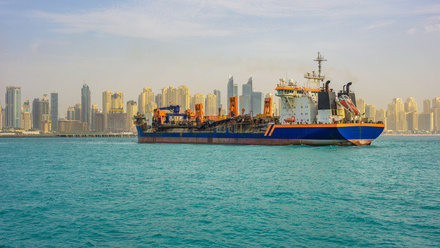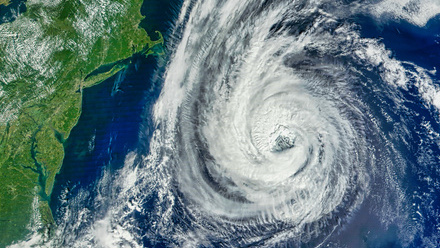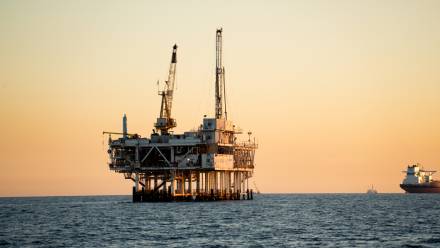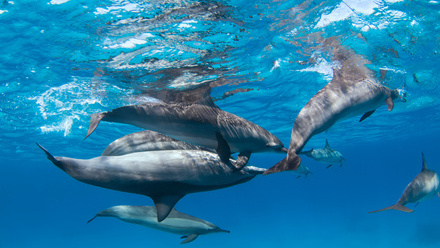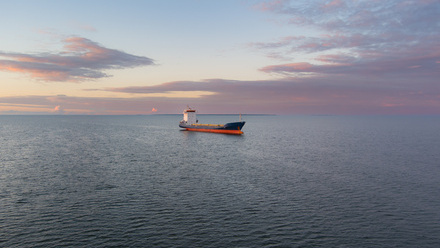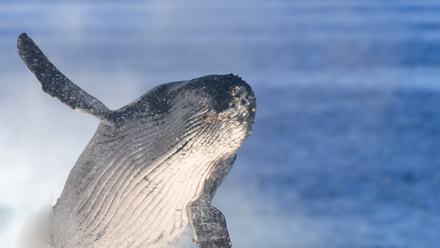Adapting tech to solve our pandemic challenges
Technology is going play a crucial part in helping the shipping industry find its way out of the pandemic.
IMarEst President Kevin Daffey outlines how automation, virtual reality and digitisation are going to be at the heart of a technology renaissance which will help us reshape our future.
Since taking over the presidency of the Institute, a major focus of mine has been on technology and how it can shape the marine world in the future. The coronavirus pandemic we are going through sharpens that focus.
The pandemic has changed life and work in a way none of us could have imagined a few months ago. With no vaccine, and best estimates suggesting one is at least 18 months away (assuming we get one that is effective), we need to find ways to adapt.
Shipping, where people traditionally work together in confined spaces for long periods of time, is an obvious example of where we clearly need to find solutions to keep people safe and get back to work.
It brings me back to technology and the role it can play. Some very advanced technology is already in use in industries such as healthcare and automotive. Harnessing learnings from them can accelerate some of the things we are already doing to give us the solutions we need, and more besides.
The rise of automation
The first is how technology that moves more shipping roles off ships and onto land is likely to see remote and autonomous shipping become more prevalent.
Having less people on ships is the obvious way to cope with social distancing and manage the health and safety of those working at sea. This could lead to highly-skilled roles, such as that of the licensed chief engineer working remotely and using technology and data to direct a smaller engineering department, for example. The chief engineer could manage more than one ship, perhaps a small fleet. Chief engineers could work shifts ensuring 24/7 high quality coverage, learning quickly how all the ships in a fleet operate.
The new, Virtual Reality
That needs tools to make it happen. VR (virtual reality) glasses are already part of some healthcare and industrial training environments. They could be used to look at a ship’s machinery; with augmentation via equipment manuals and measured data information instantly available to help diagnose problems by the crew, or to send images back and forth between the ship and shore for more expert diagnosis.
The emergence of digital twinning, a digital replica of a physical entity, helps the remote chief engineer understand how his vessel or equipment within that vessel are performing.
Smart sensors incorporated around the ship and within equipment collect data on real-time status and the environment working condition. These sensors are connected to a cloud-based system that receives, stores, analyses and then provides incredible insights into how a ship is performing.
This allows fuel saving, reduction of emissions, less wear and tear on machinery, advising on hull cleaning, and so on. These insights can be used to guide decisions made by the remote chief engineer or the ship’s crew.
In time, as confidence grows in digital twins, decisions made by humans can be automated as we move toward autonomy to support ship operations.
Classification Societies are beginning to realise the power of digital twins in the through-life management of vessels under survey. During the COVID19 crisis, remote surveys are starting to emerge as one way to help keep vessels in class, support social distancing and overcome global travel bans. Beyond the crisis, the combination of digital twins and remote surveying could be the new normal.
The increasing development of digitisation is another way to reshape how we could work. It is already quite sophisticated in some cruise ships with over 20,000 onboard sensors tracing, tracking, and diagnosing issues to keep ships in top performance before they result in a breakdown and lose valuable time at sea.
Again, this needs fewer roles needed onboard, and more remote monitoring from a chief engineer many miles away onshore.
As we emerge from this crisis with more automation and remote monitoring it will be important that we manage how humans and the machine interact. Fortunately, the IMarEST has a highly respected and world class Human Element SIG which has been, and will remain, very active in educating and informing the maritime community of the significance of the human element in this new normal.
Managing maritime cyber risks
Of course, adopting a more technology-led approach that relies on vast amounts of data being transferred from ship to shore needs an even greater focus on cyber security.
Cyber-related incidents have already affected ports and marine-related companies and with even more data transferring from ship to shore likely in future, we need to be at the forefront of this area.
Which is why it is timely that Ian Bramson is now chairing the IMarEST Maritime Cyber Risk Management Special Interest Group. We will hear more from Ian in a future issue of our weekly digital magazine.
Trust in artificial intelligence
The rapid development of Artificial Intelligence (AI) is beginning to be explored for uses in marine science and ship operations. AI is good at solving problems that require expert human judgement and experience. Used wisely, it will augment and collaborate with humans rather than replace roles or jobs. It certainly will be a logical enabler for greater autonomy in ships.
However, we must be sure AI will make the right decisions if we are to trust it.
We need to look at how we governance AI and create a set of principles, again taking learnings from the healthcare and automotive industries, as well as insights from the scientific community.
To that end, we have set up a task force to answer the big questions on AI led by one of our Fellows, Bernard Twomey from the Assuring Autonomy International Programme at the University of York.
Exploiting fuel technology
The pandemic has resulted in less travel, fewer work trips, a reduction in pollution and a cut in emissions.
We can’t of course lose sight of the need to make the world a better, less polluted place and evolving green technologies will help us work towards meeting the IMO’s ambition to reduce the total annual GHG emissions from shipping by at least 50% by 2050 compared to 2008, while, at the same time, pursuing efforts towards phasing them out entirely.
Accelerating fuel technology to create net carbon-neutral pathways for production of new marine fuels is one of the main ways we can reduce GHG emissions from ships. The creation of bio-fuels is well known and being used in some ships, but attention is shifting towards e-fuels from renewable power sources. Methanol and hydrogen are two which offer enormous opportunity for still power ships using reciprocating engines, and also fuel cells to create greener fleets. Several ship operators are planning their roadmaps for future ships that exploit these types of fuels.
Technology renaissance
All this is going to mean having to embrace a lot of change in a few years.
We could well see a great renaissance in technology which will bring job opportunities for our Institute’s scientists and engineers. Our role is to support members to tackle these challenges, helping them to learn and develop professionally so that they can take advantage of those opportunities, and shape a better future.
This is of course, a huge subject that I can’t possibly cover in one article and it’s one that I plan to write more about regularly and in greater depth.
I would like to hear your thoughts on this – do get in touch.
Kevin Daffey is the 118th President of the IMarEST.

